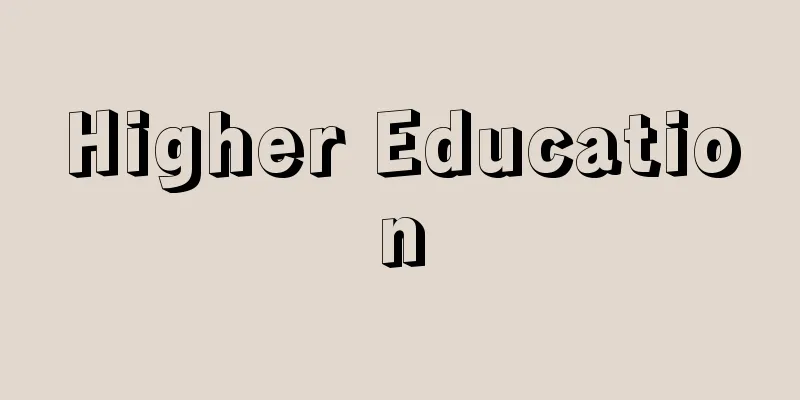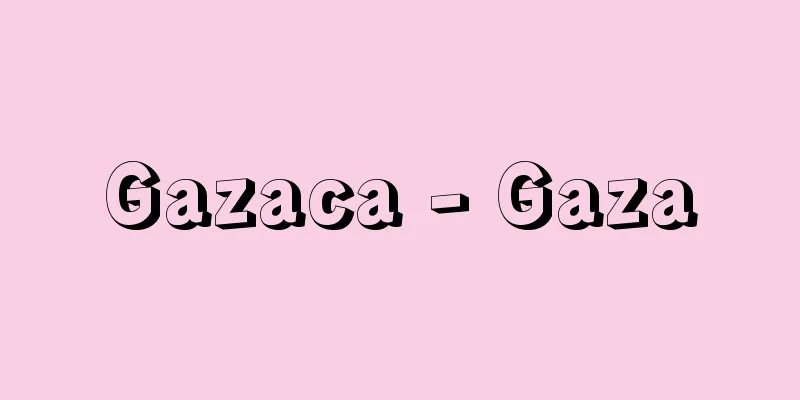Higher Education

|
It is an education that builds on the foundations of general education, with primary and secondary school education at its core, and provides more in-depth general education, advanced academic research, and the knowledge and skills required for specialized occupations. In Europe and the United States, it is called higher education. Since the 1960s, with the demand for equalization and democratization of educational opportunities and the advancement of lifelong and recurrent education, higher education has gradually moved from being education for a small elite to being more popular and universal, resulting in the diversification of higher education institutions and their educational content. In particular, together with continuing education, centered on adult education after the secondary education stage, higher education plays a part in post-secondary education and has the unique function of awarding degrees, titles, and various certificates. It is also a major pillar of tertiary education, which connects to the second stage of secondary education. [Tadashi Kaneko and Takekazu Ehara] Higher Education in JapanThe ancient Daigakuryo, medieval temples, the Shoheiko (Shōheiko) and Hankō (hanko) schools of the Edo period were all the best academic educational institutions of their time, and can be considered the origins of higher education institutions in Japan, as they educated government officials and monks. With these institutions as its base, higher education in the modern sense was developed and developed after the Meiji Restoration. In 1877 (Meiji 10), the University of Tokyo, consisting of four faculties of Law, Letters, Science, and Medicine, was founded by absorbing various existing schools. In 1886, the Imperial University Act changed its name to Imperial University, and it became a comprehensive university with separate faculties of Law, Letters, Science, Medicine, and Engineering, as well as a graduate school. From the late Meiji period through the Taisho and Showa periods, various types of institutions developed, including Imperial University, private universities, single-subject universities, old-system high schools, university preparatory schools, old-system technical schools, and higher normal schools, and the old-system higher education system was established. After the Second World War, the School Education Law of 1947 established a 6-3-3-4 school system and new universities, and most of the old higher education institutions were upgraded or reorganized into new universities. In 1950, two-year junior colleges and new graduate schools were established at private universities, and in 1953, graduate schools were also established at national and public universities. In 1962 and 1967, new technical colleges for industry and maritime were established, respectively, with a five-year and five-and-a-half-year course of study, providing general education at the high school level and vocational education. In 1985, the Open University began offering classes. Since 1975, accredited technical colleges, other miscellaneous schools, and universities under the jurisdiction of various ministries and agencies have been classified as continuing education institutions, as single-purpose vocational education institutions. In 1987, the University Council was established as an institution to deliberate on the state of higher education. In 1991, the University Council revised the standards for establishing universities, significantly relaxing existing regulations on faculties, departments, and curriculum, while in the revision of the standards for establishing graduate schools, new types of graduate schools such as graduate universities (independent graduate schools), joint graduate schools, and affiliated graduate schools were launched. Furthermore, the 1999 report of the University Council called for improvements to graduate school admission selection methods and flexibility in admission qualifications, calling for a wider opening of graduate school doors to working adults. As part of the reform of central government ministries and agencies, the University Council was restructured as the University Subcommittee of the Central Council for Education in 2001, and the Central Council for Education has subsequently published numerous recommendations and reports on higher education reform. Representative recommendations include "The Future of Higher Education in Japan" (2005), "Graduate School Education in a New Era: Toward the Creation of an Internationally Attractive Graduate School Education" (2005), and "Toward the Creation of Undergraduate Education" (2008). [Tadashi Kaneko and Takekazu Ehara] Higher education in other countriesJapan's current higher education has steadily diversified as it has become more popular, resulting in a pluralistic system consisting of several types of educational institutions. The United States, which also has a pluralistic system, has 4,352 institutions (2007-2008), including two-year junior colleges, community colleges, four-year colleges, various professional and vocational universities, graduate schools, the Open University, non-traditional universities, and for-profit universities (corporate-owned universities). In contrast, France and Germany have adopted a dual system of traditional universities with the right to award degrees and a new type of non-university sector that does not. Sweden and the United Kingdom are further unifying and popularizing the system. Looking at the rate of progression to higher education among the population of the same age, in Japan it is 56.2% (age 18; entrants to university undergraduate programs, junior college undergraduate programs, and fourth-year students at technical colleges; 2008), in the United States it is 53.2% (age 18; full-time students only; 2005), in France it is approximately 41% (age 18; entrants to higher education institutions such as national universities and Grandes Écoles preparatory courses attached to lycées), in Germany it is 23.4% (age 19; those who progressed to university), and in the UK it is 59.2% (age 18; full-time students only). In addition, the rate of students attending higher education among the population of the same age was 52.0% in Japan (applicable ages 18-21 in 2008), 57.1% in the United States (applicable ages 18-21 in 2005), 56.2% in France (applicable ages 18-22), 36.6% in Germany (applicable ages 19-22), and 52.4% in the United Kingdom (applicable ages 18-20) (all figures are from 2006 except for Japan and the United States). [Tadashi Kaneko and Takekazu Ehara] "The Establishment of Modern Higher Education -- Japan and the West," edited by Nakamura Naomi (1991, Waseda University Institute of Social Sciences)" ▽ "The History and Future of American Higher Education -- Prospects for the 21st Century," written by Clark Kerr and supervised by Kitamura Kazuyuki (1998, Tamagawa University Press)" ▽ "Japanese Universities," on-demand version, written by Okubo Toshiaki (2008, Tamagawa University Press)" ▽ "University Reform in Japan at a Turning Point -- A Comparison with the United States," written by Ehara Takekazu (2010, Toshin-do)" ▽ "International Comparison of Education Indicators," edited by the Ministry of Education, Culture, Sports, Science and Technology (various editions, National Printing Bureau; from the 2008 edition onwards, the version is available as a PDF file on the Ministry of Education, Culture, Sports, Science and Technology website)" ▽ "The Crisis of Universities Around the World -- Seeking a New Image of the University," written by Shioki Morikazu (Chuokoron-Shinsha) [Reference] | | | | | | | | | | | | | |Source: Shogakukan Encyclopedia Nipponica About Encyclopedia Nipponica Information | Legend |
|
初等教育、中等教育の学校教育を中核とする普通教育の基礎の上に位置づけられた、さらに精深な一般教養教育と高度な学問研究ならびに専門職業に必要な知識・技能を授ける教育。欧米ではhigher educationと称する。1960年代以後、教育の機会均等化と民主化の要求および生涯教育やリカレント教育の進展とともに、高等教育は、従来の少数エリート中心の教育からしだいに大衆化、普遍化への過程をたどり、高等教育機関およびその教育内容の多様化をもたらした。ことに中等教育段階以後の成人教育を中心とする継続教育とともに、高等教育は、中等後教育post-secondary educationの一翼を担い、学位・称号および各種の資格証を授与する独特の機能を有する。また第二段階の中等教育に接続する第三段階教育tertiary educationの主要な柱ともなっている。 [金子忠史・江原武一] 日本の高等教育上代の大学寮、中世の寺院、江戸時代の昌平黌(しょうへいこう)や藩校(はんこう)などもそれぞれの時代の最高の学術的な教育機関であり、官吏や僧侶(そうりょ)などを養成してきた点で、日本の高等教育機関の源流とみなすことができる。これらの機関を母体としながら、近代的な意味における高等教育は、明治維新以後、整備発展した。1877年(明治10)法・文・理・医の4学部構成の東京大学が、従来の諸学校を吸収合併して創設された。1886年の帝国大学令で帝国大学と改称され、法・文・理・医・工の分科大学と大学院を有する総合大学となった。以後、明治後期から大正・昭和期にかけて、帝国大学、私立大学、単科大学、旧制高等学校、大学予科、旧制専門学校、高等師範学校の諸類型が発展し、旧制の高等教育制度が確立した。 第二次世界大戦後、1947年(昭和22)制定の学校教育法によって、六・三・三・四の学校体系ならびに新制大学が発足し、旧制の高等教育機関はほとんど新制大学に昇格再編成された。1950年には2年制の短期大学、私立大学に新制大学院が発足し、1953年から国・公立大学にも大学院が設置された。1962年と1967年には、それぞれ工業と商船の高等専門学校が新設され、修業年限を5年および5年半とし、高等学校段階の普通教育と職業専門教育を施している。また、1985年から放送大学が授業を開講している。1975年より認定された専修学校、およびその他の各種学校、諸省庁管轄の大学校は、単一目的の職業教育機関として継続教育機関に分類される。 1987年(昭和62)、高等教育のあり方に関する審議を行う機関として、大学審議会(大学審)が設置された。1991年(平成3)の大学審による大学設置基準改正では、従来の学部・学科、教育課程(カリキュラム)などの規制が大幅に緩和され、大学院設置基準改正では、大学院大学(独立大学院)、連合大学院、連携大学院など新形態の大学院が発足した。また、1999年の大学審の答申は、大学院入学者選抜方法の改善とともに入学資格の弾力化を図り、社会人に大学院の門戸を広く開放することを求めている。 大学審は中央省庁等改革の一環として、2001年(平成13)に中央教育審議会の大学分科会として再編されたが、中央教育審議会はその後、高等教育改革に関する数多くの答申や報告などを公表した。代表的な答申は「我が国の高等教育の将来像」(2005年)、「新時代の大学院教育―国際的に魅力ある大学院教育の構築に向けて―」(2005年)、「学士課程教育の構築に向けて」(2008年)などである。 [金子忠史・江原武一] 諸外国の高等教育日本の現行の高等教育は、大衆化とともに多様化の一途をたどり、数種類の類型の教育機関からなる多元的な制度となった。同様に多元的な制度をとっているアメリカは、2年制の短期大学であるジュニア・カレッジ、コミュニティ・カレッジ、4年制のカレッジ、各種の専門職業大学、大学院および放送大学、非伝統的な大学、営利大学(株式会社立大学)など4352校(2007-2008年度)に及ぶ機関をもつ。それに対し、フランスおよびドイツでは、学位授与権をもつ伝統的な大学と、それをもたない新しいタイプの非大学部門の二元制が採用されている。スウェーデンおよびイギリスでは、さらにその一元化を図り、大衆化を進めている。 同年齢人口に占める高等教育への進学率をみると、日本は56.2%(該当年齢18歳。大学学部・短期大学本科入学者、および高等専門学校第4学年在学者。2008年)、アメリカ53.2%(同18歳。フルタイム進学者のみ。2005年)、フランス約41%(同18歳。国立大学、リセ付設のグランゼコール準備級などの高等教育機関入学者)、ドイツ23.4%(同19歳。大学進学者)、イギリス59.2%(同18歳。フルタイム進学者のみ)となっている。また、同年齢人口に占める高等教育の在学率は、日本は52.0%(該当年齢18~21歳。2008年)を占め、アメリカ57.1%(同18~21歳。2005年)、フランス56.2%(同18~22歳)、ドイツ36.6%(同19~22歳)、イギリス52.4%(同18~20歳)となっている(日本とアメリカ以外はすべて2006年の数値)。 [金子忠史・江原武一] 『中村尚美編『近代高等教育の成立――日本と欧米』(1991・早稲田大学社会科学研究所)』▽『クラーク・カー著、喜多村和之監訳『アメリカ高等教育の歴史と未来――21世紀への展望』(1998・玉川大学出版部)』▽『大久保利謙著『日本の大学』オンデマンド版(2008・玉川大学出版部)』▽『江原武一著『転換期日本の大学改革――アメリカとの比較』(2010・東信堂)』▽『文部科学省編『教育指標の国際比較』(各年版・国立印刷局、平成20年版以降は文部科学省ホームページにてPDF形式のファイルで提供)』▽『潮木守一著『世界の大学危機――新しい大学像を求めて』(中央公論新社)』 [参照項目] | | | | | | | | | | | | | |出典 小学館 日本大百科全書(ニッポニカ)日本大百科全書(ニッポニカ)について 情報 | 凡例 |
<<: Council on Higher Education
>>: Kodokan Writings - Kodokan Writings
Recommend
Giki
(Noun) ("Gi" refers to the special privi...
University of Exeter
...In the 20th century, a revival movement for th...
note verbale (English spelling)
…Notes, also called announcements, are the most i...
Okinawa Butterfly Dragonfly - Okinawa Butterfly Dragonfly
...The larvae are short-bodied and long-legged, a...
Kingdom of Andriana
… [Ken Akasaka] [history] As mentioned above, the...
Potash ball - Kalikyu
A container used to quantitatively absorb carbon ...
Lidocaine - Lidocaine
It was developed as a local anesthetic, but has s...
lung-book
…It is also called the lung book. The respiratory...
Saihoji Temple
This temple is of the Tenryuji school of the Rinz...
Aloe hawalltioides - Aloe hawalltioides
…It is found in the wild along the Mediterranean ...
Good neighbour policy - Zenrinseisaku (English spelling) good neighbour policy
This refers to the friendly policy towards Latin A...
Mataram Islam
An Islamic kingdom that existed in Indonesia, main...
Natasho [village] - Natasho
A village in Oniyuu County, in the southwestern ti...
indirect measurement
…For example, the speed of an object is calculate...
《Gyokuzui》
…Do-ka founded Tofuku-ji Temple on the site of Ho...




![Nitta [town] - Nitta](/upload/images/67cc6f238545e.webp)




